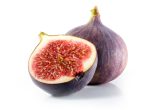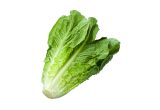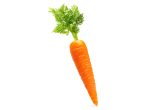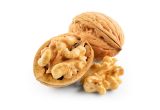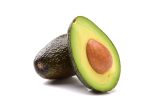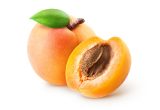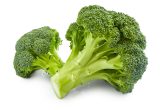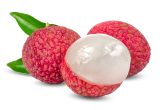Kiwi

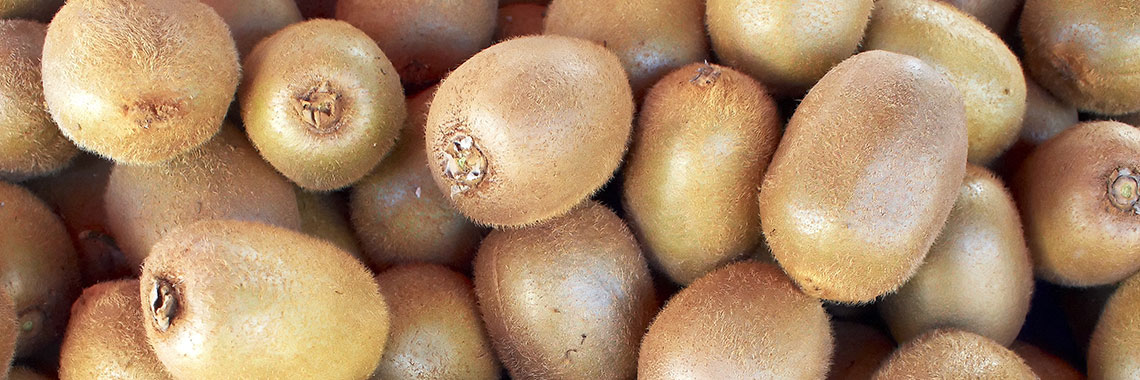
Description
- The kiwi (Actinidia deliciosa) is a tree that belongs to the Actinidiaceae family.
- It is a climbing plant native to China that is said to be dioecious (Shirosaki, 2008), meaning that male and female flowers grow on separate feet.
- The ‘Hayward’ cultivar (Actinidia deliciosa) is the most common, but there are many other cultivars with variations in colour, taste and nutritional properties (Nishiyama, 2007).
PHYSICAL AND ORGANOLEPTIC CHARACTERISTICS
- Kiwifruit are most often yellow or green in colour when ripe, but some may have cores that are varying degrees of red (Wang, 2003; Montefiori, 2005; Fergusson, 2011).
- Kiwifruit exhibit a wide range of colours due to the accumulation of chlorophyll, carotenoid (mostly beta-carotene and lutein) or anthocyanin pigments (Ampomah-Dwamena, 2019).
- The sugar/acid balance of kiwifruit depends mainly on its citric acid content. These fruits have a high total acid content (1-3%), of which 40-60% is quinic acid, 40-60% is citric acid and 10% is malic acid (Marsh, 2009). Acid accumulation is a dynamic process: citrate accumulating throughout fruit development, but quinic acid accumulating mainly in young fruit (Marsh, 2016).
- To date, just over 80 volatile compounds have been identified in kiwifruit aroma. The main components are methyl ethyl butanoate, (Z)- and (E)-hexenal, hexanal, (Z)- and (E)-3-hexenol and methyl benzoate (Garcia, 2012).
- The aroma of ripe Hayward kiwifruit has been described as herbaceous and sulphurous with flavours of melon and sweet candy (Wang, 2011). As in melon, sulphur compounds in kiwifruit include thioesters such as methyl-2-(methylthio)acetate and ethyl(methylthio)acetate (Jordan, 2002; Aubert, 2004; Aubert, 2006). Studies have shown that aroma concentration decreases if the fruit is harvested after ripening and after a storage period of 3 months (Santoni, 2013).
- A Chinese study on 3 kiwifruit cultivars found 20 volatile compounds responsible for fruit aroma. Noteworthy differences were observed for three volatile compounds namely acetaldehyde, ethanol and furfural (Zhang, 2016).
COMPOSITION CHARACTERISTICS (excluding macronutrients, vitamins and minerals)
- Kiwifruit is rich in antioxidants including vitamin C, vitamin E, carotenoids lutein, zeaxanthin, β-carotene, chlorophylls, quinic acid, glycosidic derivatives of caffeic acid, β-sitosterol, chlorogenic acid, and phenolic compounds including flavones and flavonones (Richardson, 2018).
- Due to its contents of biologically active micronutrients, many studies have been conducted on kiwifruit and more specifically on the antioxidant and anti-inflammatory action of these compounds that are reported to prevent the onset of certain cardiovascular diseases, cancers and other degenerative disorders (Singletary, 2012, Richardson, 2018).
- Kiwifruit are also thought to exert positive effects on digestion due to their content of fibre and actinidin, a natural proteolytic enzyme unique to this fruit that breaks down proteins and aids gastric and ileal digestion, but also other phytochemicals that may stimulate intestinal motility (Richardson, 2018).
- Rich in polyphenols and vitamin C, kiwifruit also has anti-diabetic, anti-inflammatory, anti-microbial and cardiovascular protective properties (Ma, 2019).
RAW
The following values are approximate and depend on variety, season, ripeness, cultivation conditions, etc. Kiwifruit provides an average of 60.50 calories (kcal) per 100 g, i.e. 255 kJ. A kiwifruit weighs on average 100 g.
COMPOSITION TABLES
For each nutrient, the tables provide information on the content, the minimum and maximum values and the percentage of the Dietary Reference Values (DRVs) for 100 g net of kiwi fruit, pulp and seeds, raw.
MACRONUTRIENTS
| Constituent (g) | Average content |
Min-Max per 100g |
DRV% |
|---|---|---|---|
| Water | 83,50 | 80 - 86,40 | - |
| Fibers | 2,40 | 2 - 3,80 | - |
| Carbohydrates | 11 | - | 4,23 |
| Sugars | 8,90 | 6,79 - 9,52 | 9,89 |
| Lipids | 0,60 | 0,11 - 1,09 | 0,86 |
| Saturated fat | 0,13 | 0,029 - 0,13 | 0,65 |
| Protein | 0,88 | 0,10 - 1,60 | 1,76 |
| Constituent (g) | Amount | Min-Max | DRV% |
|---|---|---|---|
| Water | Ciqual 2020 (valeur issue des analyses Ciqual-Aprifel 2017) | - | - |
| Fibers | Ciqual 2020 (valeur issue des analyses Ciqual-Aprifel 2017) | - | - |
| Carbohydrates | Ciqual 2020 | - | Réglement (UE) N°1169/2011 du parlement Européen et du conseil du 25 octobre 2011 |
| Sugars | Ciqual 2020 (valeur issue des analyses Ciqual-Aprifel 2017) | - | Réglement (UE) N°1169/2011 du parlement Européen et du conseil du 25 octobre 2011 |
| Lipids | Ciqual 2020 (valeur issue des analyses Ciqual-Aprifel 2017) | - | Réglement (UE) N°1169/2011 du parlement Européen et du conseil du 25 octobre 2011 |
| Saturated fat | Ciqual 2020 (valeur issue des analyses Ciqual-Aprifel 2017) | - | Réglement (UE) N°1169/2011 du parlement Européen et du conseil du 25 octobre 2011 |
| Protein | Ciqual 2020 (valeur issue des analyses Ciqual-Aprifel 2017) | - | Réglement (UE) N°1169/2011 du parlement Européen et du conseil du 25 octobre 2011 |
Zoom on carbohydrates
- The carbohydrate content of kiwifruit (11 g per 100 g) is slightly below the average amount found in fresh fruit: approximately 11.31 g per 100 g.
- These are mainly fructose (4.30 g per 100 g), glucose (3.80 g per 100 g) and sucrose (0.80 g per 100 g).
Zoom on fibres
- Kiwifruit contains 2.40 g of fibre per 100 g, which is slightly lower than the average content in fresh fruit (2.77 g per 100 g).
Zoom on proteins
- The protein content of kiwi fruit (0.88 g per 100 g) is slightly lower than the average amount found in fresh fruit: 0.93 g per 100 g.
Zoom on lipids
- The fat content of kiwifruit (0.60 g per 100 g) is almost identical to the average amount found in fresh fruit: 0.56 g per 100 g. Kiwifruit is therefore considered to be low in fat* as it contains less than 3 g per 100 g.
*Regulation (EC) No 1924/2006 of the European Parliament and of the Council of 20 December 2006 on nutrition and health claims made on foods.
MINERALS AND TRACE ELEMENTS
| Constituent | Average content |
Min-Max per 100g |
DRV% |
|---|---|---|---|
| Calcium (mg) | 29 | 21 - 45 | 3,63 |
| Chloride (mg) | 34,70 | NC - 61 | 4,34 |
| Copper (mg) | 0,15 | 0,077 - 0,18 | 15 |
| Iron (mg) | 0,16 | NC - 0,70 | 1,14 |
| Iodine (µg) | < 20 | 0,60 - NC | - |
| Magnesium (mg) | 12 | 11 - 23 | 3,20 |
| Manganese (mg) | 0,05 | 0,049 - 0,16 | 2,50 |
| Phosphorus (mg) | 26 | 25 - 42 | 3,71 |
| Potassium (mg) | 290 | 250 - 358 | 14,50 |
| Selenium (µg) | < 20 | 0,30 - NC | - |
| Sodium (mg) | < 5 | 0 - NC | - |
| Zinc (mg) | 0,12 | 0,06 - 0,20 | 1,20 |
| Constituent | Amount | Min-Max | DRV% |
|---|---|---|---|
| Calcium (mg) | Ciqual 2020 (valeur issue des analyses Ciqual-Aprifel 2017) | - | Réglement (UE) N°1169/2011 du parlement Européen et du conseil du 25 octobre 2011 |
| Chloride (mg) | Ciqual 2020 (valeur issue des analyses Ciqual-Aprifel 2017) | - | Réglement (UE) N°1169/2011 du parlement Européen et du conseil du 25 octobre 2011 |
| Copper (mg) | Ciqual 2020 (valeur issue des analyses Ciqual-Aprifel 2017) | - | Réglement (UE) N°1169/2011 du parlement Européen et du conseil du 25 octobre 2011 |
| Iron (mg) | Ciqual 2020 (valeur issue des analyses Ciqual-Aprifel 2017) | - | Réglement (UE) N°1169/2011 du parlement Européen et du conseil du 25 octobre 2011 |
| Iodine (µg) | Ciqual 2020 (valeur issue des analyses Ciqual-Aprifel 2017) | - | Réglement (UE) N°1169/2011 du parlement Européen et du conseil du 25 octobre 2011 |
| Magnesium (mg) | Ciqual 2020 (valeur issue des analyses Ciqual-Aprifel 2017) | - | Réglement (UE) N°1169/2011 du parlement Européen et du conseil du 25 octobre 2011 |
| Manganese (mg) | Ciqual 2020 (valeur issue des analyses Ciqual-Aprifel 2017) | - | Réglement (UE) N°1169/2011 du parlement Européen et du conseil du 25 octobre 2011 |
| Phosphorus (mg) | Ciqual 2020 (valeur issue des analyses Ciqual-Aprifel 2017) | - | Réglement (UE) N°1169/2011 du parlement Européen et du conseil du 25 octobre 2011 |
| Potassium (mg) | Ciqual 2020 (valeur issue des analyses Ciqual-Aprifel 2017) | - | Réglement (UE) N°1169/2011 du parlement Européen et du conseil du 25 octobre 2011 |
| Selenium (µg) | Ciqual 2020 (valeur issue des analyses Ciqual-Aprifel 2017) | - | Réglement (UE) N°1169/2011 du parlement Européen et du conseil du 25 octobre 2011 |
| Sodium (mg) | Ciqual 2020 (valeur issue des analyses Ciqual-Aprifel 2017) | - | - |
| Zinc (mg) | Ciqual 2020 (valeur issue des analyses Ciqual-Aprifel 2017) | - | Réglement (UE) N°1169/2011 du parlement Européen et du conseil du 25 octobre 2011 |
Zoom on minerals and trace elements
- Kiwifruit is a source of copper, as it provides the equivalent of 15% of DRVs, i.e. 0.15 mg per 100 g. According to the Ciqual 2020 table, kiwi is one of the fruits with the highest copper content.
- It also contains a significant amount of potassium, as it provides the equivalent of 14.50% of DRVs, i.e. 290 mg per 100 g. Moreover, according to the Ciqual 2020 table, kiwifruit is one of the fruits with the highest potassium content.
- The other minerals and trace elements are present in quantities representing less than 5% of DRVs.
VITAMINS
| Constituent | Average content |
Min-Max per 100g |
DRV% |
|---|---|---|---|
| Provitamin A Beta-carotene (µg) | 38 | 32 - 70 | - |
| Vitamin A equivalent (µg) | 6,33 | 5,33 - 11,67 | 0,79 |
| Vitamin B1 (mg) | < 0,015 | 0,006 - 0,038 | - |
| Vitamin B2 (mg) | 0,021 | 0,02 - 0,034 | 1,50 |
| Vitamin B3 (mg) | 0,23 | NC - 0,44 | 1,44 |
| Vitamin B5 (mg) | 0,24 | 0,13 - 0,28 | 4 |
| Vitamin B6 (mg) | 0,036 | NC - 0,15 | 2,57 |
| Vitamin B9 (µg) | 22,20 | 20 - 48 | 11,10 |
| Vitamin C (mg) | 81,9 | 77,40 - 118 | 102,38 |
| Vitamin E (mg) | 0,96 | 0,29 - 1,82 | 8 |
| Vitamin K1 (µg) | 16,60 | NC - 50,30 | 22,13 |
| Constituent | Amount | Min-Max | DRV% |
|---|---|---|---|
| Provitamin A Beta-carotene (µg) | Ciqual 2020 (valeur issue des analyses Ciqual-Aprifel 2017) | - | - |
| Vitamin A equivalent (µg) | Calcul à partir de la valeur Provitamine A Béta-carotène* | - | Réglement (UE) N°1169/2011 du parlement Européen et du conseil du 25 octobre 2011 |
| Vitamin B1 (mg) | Ciqual 2020 (valeur issue des analyses Ciqual-Aprifel 2017) | - | Réglement (UE) N°1169/2011 du parlement Européen et du conseil du 25 octobre 2011 |
| Vitamin B2 (mg) | Ciqual 2020 (valeur issue des analyses Ciqual-Aprifel 2017) | - | Réglement (UE) N°1169/2011 du parlement Européen et du conseil du 25 octobre 2011 |
| Vitamin B3 (mg) | Ciqual 2020 (valeur issue des analyses Ciqual-Aprifel 2017) | - | Réglement (UE) N°1169/2011 du parlement Européen et du conseil du 25 octobre 2011 |
| Vitamin B5 (mg) | Ciqual 2020 (valeur issue des analyses Ciqual-Aprifel 2017) | - | Réglement (UE) N°1169/2011 du parlement Européen et du conseil du 25 octobre 2011 |
| Vitamin B6 (mg) | Ciqual 2020 (valeur issue des analyses Ciqual-Aprifel 2017) | - | Réglement (UE) N°1169/2011 du parlement Européen et du conseil du 25 octobre 2011 |
| Vitamin B9 (µg) | Ciqual 2020 (valeur issue des analyses Ciqual-Aprifel 2017) | - | Réglement (UE) N°1169/2011 du parlement Européen et du conseil du 25 octobre 2011 |
| Vitamin C (mg) | Ciqual 2020 (valeur issue des analyses Ciqual-Aprifel 2017) | - | Réglement (UE) N°1169/2011 du parlement Européen et du conseil du 25 octobre 2011 |
| Vitamin E (mg) | Ciqual 2020 (valeur issue des analyses Ciqual-Aprifel 2017) | - | Réglement (UE) N°1169/2011 du parlement Européen et du conseil du 25 octobre 2011 |
| Vitamin K1 (µg) | Ciqual 2020 (valeur issue des analyses Ciqual-Aprifel 2017) | - | Réglement (UE) N°1169/2011 du parlement Européen et du conseil du 25 octobre 2011 |
Zoom on vitamins
- Kiwifruit is high in vitamin C, as it provides the equivalent of 102.38% of DRVs, i.e. 81.90 mg per 100 g. Moreover, according to the Ciqual 2020 table, kiwifruit is the fruit with the highest vitamin C content after guava and blackcurrant.
- It is also a source of vitamin K1, as it provides the equivalent of 22.13% of DRVs, i.e. 16.60 µg per 100 g. After blueberries, kiwifruit is the fruit with the highest vitamin K1 content (Ciqual 2020 table).
- Kiwifruit also provides a significant amount of vitamin B9, as it represents 11.10% of DRVs, i.e. 22.20 µg per 100 g.
- The other vitamins are present in quantities representing less than 9% of DRVs.
*Calculation made: Beta Carotene / 6 + retinol
POLYPHENOLS
| Constituent (mg) | Average content |
Min-Max per 100mg |
|---|---|---|
| Flavonoids (mg) | 0,70 | - |
| of which Flavonols (mg) | 0,21 | - |
| of which Flavanols (mg) | 0,49 | - |
| Phenolic Acids (mg) | 0,066 | - |
| of which Hydroxycinnamic acids (mg) | 0,066 | - |
| Total polyphenols | 0,765 | - |
| Constituent (mg) | Amount | Min-Max |
|---|---|---|
| Flavonoids | Etude CTIFL-Aprifel 2017-2018 Méthode utilisée : Chromatographie | - |
| of which Flavonols | Etude CTIFL-Aprifel 2017-2018 Méthode utilisée : Chromatographie | - |
| of which Flavanols | Etude CTIFL-Aprifel 2017-2018 Méthode utilisée : Chromatographie | - |
| Phenolic Acids | Etude CTIFL-Aprifel 2017-2018 Méthode utilisée : Chromatographie | - |
| of which Hydroxycinnamic acids | Etude CTIFL-Aprifel 2017-2018 Méthode utilisée : Chromatographie | - |
| Total polyphenols | Etude CTIFL-Aprifel 2017-2018 Méthode utilisée : Chromatographie | - |
Zoom on polyphenols
- Polyphenols are substances with an antioxidant effect.
- The polyphenols in kiwifruit are mainly in the form of flavanols (63% of total polyphenols) from the flavonoid family.
Nutrition and health claims
According to the definitions of nutrition claims as presented in Regulation (EC) No 1924/2006 on nutrition and health claims, and in view of the composition of kiwifruit, the following claims may be used:
NUTRITION CLAIMS OF KIWIFRUIT
- High in vitamin C (100 g of kiwifruit provide the equivalent of over 30% of DRVs)
- Source of vitamin K1 (100 g of kiwifruit provide the equivalent of more than 15% of DRVs)
- Source of copper (100 g of kiwifruit provide the equivalent of more than 15% of DRVs)
- Kiwifruit is low in fat* (less than 3 g per 100 g)
HEALTH CLAIMS (for a consumption of 100 g of kiwifruit)
Vitamin C
- Vitamin C contributes to:
- normal function of the immune system during and after intense physical exercise,
- normal collagen formation for the normal function of blood vessels,
- normal collagen formation for the normal function of bones,
- normal collagen formation for the normal function of cartilage,
- normal collagen formation for the normal function of gums,
- normal collagen formation for the normal function of skin,
- normal collagen formation for the normal function of teeth,
- normal energy-yielding metabolism,
- normal functioning of the nervous system,
- normal psychological function,
- normal function of the immune system,
- protection of cells from oxidative stress,
- reduction of tiredness and fatigue,
- regeneration of the reduced form of vitamin E.
- Vitamin C increases iron absorption.
Vitamin K1
- Vitamin K1 contributes to:
- maintenance of normal bones,
- normal blood clotting.
Copper
- Copper contributes to:
- maintenance of normal connective tissues,
- normal energy-yielding metabolism,
- normal functioning of the nervous system,
- normal hair pigmentation,
- normal iron transport in the body,
- normal skin pigmentation,
- normal function of the immune system,
- protection of cells from oxidative stress.
References
- Agence nationale de sécurité sanitaire de l’alimentation, de l’environnement et du travail. Table de composition nutritionnelle des aliments Ciqual 2020. Consultée le 11/08/2020 depuis le site internet Ciqual https://ciqual.anses.fr/
- Aubert C & Bourger N. Investigation of volatiles in Charentais cantaloupe melons (Cucumis melo var. cantalupensis). Characterization of aroma constituents in some cultivars. Journal of Agricultural and Food Chemistry. 2004;52(14):4522-4528.
- Aubert C.& Pitrat M. Volatile compounds in the skin and pulp of Queen Anne’s pocket melon. Journal of Agricultural and Food Chemistry. 2006;54(21):8177-8182.
- Ampomah‐Dwamena C, Thrimawithana AH, Dejnoprat S, Lewis D, Espley RV, Allan AC. A kiwifruit (Actinidia deliciosa) R2R3‐MYB transcription factor modulates chlorophyll and carotenoid accumulation. The New Phytologist. 2019;221(1): 309–325.
- Ferguson AR. Kiwifruit: evolution of a crop. Acta Horticulturae. 2011;913:31–42.
- Garcia CV, Quek SY, Stevenson RJ, & Winz RA. Kiwifruit flavour: a review. Trends in Food Science & Technology. 2012;24(2):82-91.
- Jordan MJ, Margaria CA, Shaw PE, & Goodner KL. Aroma active components in aqueous kiwi fruit essence and kiwi fruit puree by GC-MS and multidimensional GC/GC-O. Journal of Agricultural and Food Chemistry. 2002;50:5386e5390.
- Ma T, Lan T, Geng T, Ju Y, Cheng G, Que Z, et al. Nutritional properties and biological activities of kiwifruit (Actinidia) and kiwifruit products under simulated gastrointestinal in vitro digestion. Food & Nutrition Research. 2019;63: 10.
- Marsh KB, Boldingh HL, Shilton RS, Laing WA. Changes in quinic acid metabolism during fruit development in three kiwifruit species. Funct Plant Biol. 2009;36(5):463–470
- Marsh KB, Harker FR. Acid Metabolism in Kiwifruit. In: The Kiwifruit Genome. Springer International Publishing : Testolin R, Huang H-W, Ferguson AR; 2016 ; 264 p.
- Montefiori M, McGhie TK, Costa G, Ferguson AR. Pigments in the fruit of red-fleshed kiwifruit (Actinidia chinensis and Actinidia deliciosa). J Agric Food Chem. 2005 Nov 30;53(24):9526-30.
- Nishiyama I. Fruits of the actinidia genus. Adv Food Nutr Res. 2007;52:293-324.
- Règlement (CE) N° 1924/2006 du Parlement européen et du Conseil du 20 décembre 2006 concernant les allégations nutritionnelles et de santé portant sur les denrées alimentaires.
- Règlement (UE) N°432/2012 de la Commission du 16 mai 2012 établissant une liste des allégations de santé autorisées portant sur les denrées alimentaires, autres que celles faisant référence à la réduction du risque de maladie ainsi qu’au développement et à la santé infantiles.
- Règlement (UE) n°1169/2011 du Parlement européen et du Conseil du 25 octobre 2011 concernant l’information des consommateurs sur les denrées alimentaires, modifiant les règlements (CE) n°1924/2006 et (CE) n°1925/2006 du Parlement européen et de Conseil et abrogeant la directive 87/250/CEE de la Commission, la directive 90/496/CEE du Conseil, la directive 1999/10/CE de la Commission, la directive 200/13/CE du Parlement européen et du Conseil, les directives 2002/67/CE et 2008/5/CE de la Commission et le règlement (CE) n°608/2004 de la Commission.
- Richardson DP, Ansell J, Drummond LN. The nutritional and health attributes of kiwifruit: a review. European Journal of Nutrition 2018;57(8): 2659–2676.
- Santoni F, Barboni T, Paolini J, Costa J. Influence of cultivation parameters on the composition of volatile compounds and physico-chemical characteristics of kiwi fruit. J Sci Food Agric. 2013 Feb;93(3):604-10.
- Singletary K. Kiwifruit: overview of potential health benefits. Nutrition Today. 2012; 47(3):133-147.
- Shirosaki M, Koyama T, Yazawa K. Anti-hyperglycemic activity of kiwifruit leaf (Actinidia deliciosa) in mice. Biosci Biotechnol Biochem. 2008;72(4):1099-102.
- Wang M, Li M, and Meng A. Selection of a new red-fleshed kiwifruit cultivar ‘Hongyang’. Acta Hort. 2003 ;610:115-117
- Wang MY, MacRae E, Wohlers M, & Marsh K. Changes in volatile production and sensory quality of kiwifruit during fruit maturation in Actinidia deliciosa ’Hayward’ and A. chinensis ’Hort16A’. Postharvest Biology and Technology. 2011;59:16e24.
- Zhang C-Y, Zhang Q, Zhong C-H, Guo M-Q. Analysis of volatile compounds responsible for kiwifruit aroma by desiccated headspace gas chromatography-mass spectrometry. Journal of Chromatography. A. 2016;1440: 255–259.





